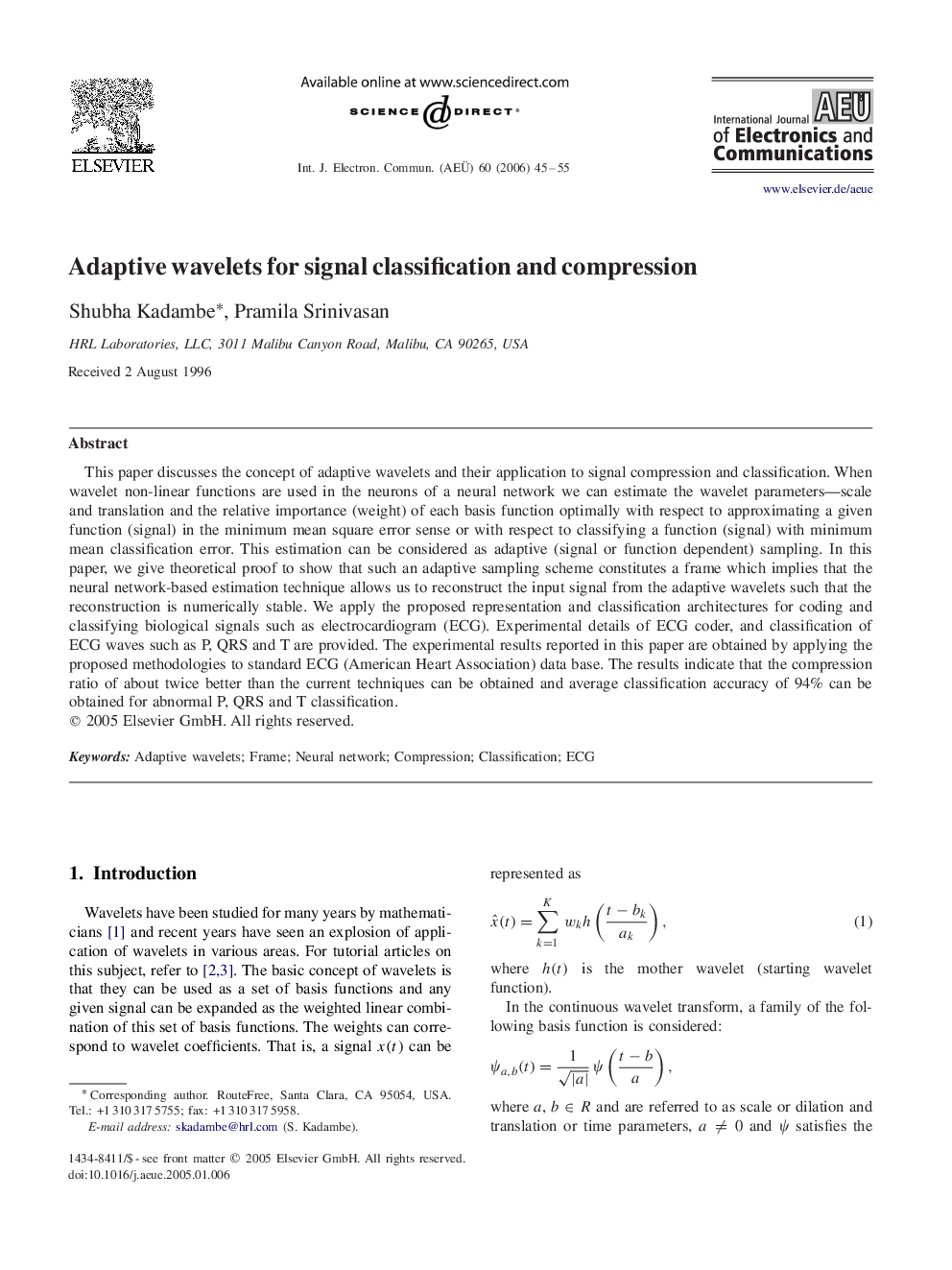| Article ID | Journal | Published Year | Pages | File Type |
|---|---|---|---|---|
| 445521 | AEU - International Journal of Electronics and Communications | 2006 | 11 Pages |
This paper discusses the concept of adaptive wavelets and their application to signal compression and classification. When wavelet non-linear functions are used in the neurons of a neural network we can estimate the wavelet parameters—scale and translation and the relative importance (weight) of each basis function optimally with respect to approximating a given function (signal) in the minimum mean square error sense or with respect to classifying a function (signal) with minimum mean classification error. This estimation can be considered as adaptive (signal or function dependent) sampling. In this paper, we give theoretical proof to show that such an adaptive sampling scheme constitutes a frame which implies that the neural network-based estimation technique allows us to reconstruct the input signal from the adaptive wavelets such that the reconstruction is numerically stable. We apply the proposed representation and classification architectures for coding and classifying biological signals such as electrocardiogram (ECG). Experimental details of ECG coder, and classification of ECG waves such as P, QRS and T are provided. The experimental results reported in this paper are obtained by applying the proposed methodologies to standard ECG (American Heart Association) data base. The results indicate that the compression ratio of about twice better than the current techniques can be obtained and average classification accuracy of 94% can be obtained for abnormal P, QRS and T classification.
